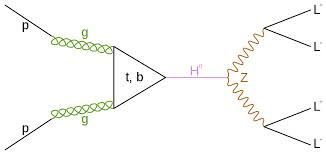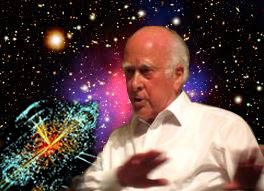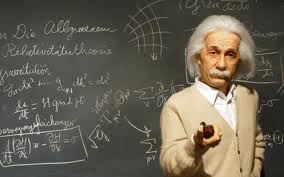Beyond Higgs
Edited: Tuesday, 30 November 2021


 While Peter W. Higgs does not like the nicknames “God Particle” and “Higgs Particle”, he received the Nobel Prize in Physics 2013 for predicting an omnipresent phenomenon that gives mass to the building blocks of everything. The universe is described as filled with a “Higgs field” in which his particle is a vibration so perhaps the intrinsic nature of time will now be shown more interest.
While Peter W. Higgs does not like the nicknames “God Particle” and “Higgs Particle”, he received the Nobel Prize in Physics 2013 for predicting an omnipresent phenomenon that gives mass to the building blocks of everything. The universe is described as filled with a “Higgs field” in which his particle is a vibration so perhaps the intrinsic nature of time will now be shown more interest.
 Albert Einstein and many other great thinkers have viewed time as merely an illusion of the human brain, like how the belief in God has been interpreted. In my humble opinion, omnipresent waves of time are the cause of reality. A new wave theory of time as proposed by me more than 20 years ago was in 2009 - the International Year of Astronomy - published by the Swedish Mathematical Society. According to the proposed theory, everything is shaped by waves of time having, like the periphery of a circle, neither a beginning nor an end but repetition cycles of limited lengths. A repetition cycle of about 10^{-20} sec is connected to the elementary charges and an elementary particle of gravitation is connected to a cycle of about 10^{20} sec. These cycles are, either alone or in combination, behind all clocks that are known. Nuclear decay clocks are a function of the same flow of time as clocks driven by gravity. An explanation is given by the wave theory of time according to which the elementary particle of gravitation has in free space an average density of more than a thousand particles per nuclear volume.
Albert Einstein and many other great thinkers have viewed time as merely an illusion of the human brain, like how the belief in God has been interpreted. In my humble opinion, omnipresent waves of time are the cause of reality. A new wave theory of time as proposed by me more than 20 years ago was in 2009 - the International Year of Astronomy - published by the Swedish Mathematical Society. According to the proposed theory, everything is shaped by waves of time having, like the periphery of a circle, neither a beginning nor an end but repetition cycles of limited lengths. A repetition cycle of about 10^{-20} sec is connected to the elementary charges and an elementary particle of gravitation is connected to a cycle of about 10^{20} sec. These cycles are, either alone or in combination, behind all clocks that are known. Nuclear decay clocks are a function of the same flow of time as clocks driven by gravity. An explanation is given by the wave theory of time according to which the elementary particle of gravitation has in free space an average density of more than a thousand particles per nuclear volume.
Hypothetical dark energy in vacuum is believed to explain Einstein’s cosmological constant but quantum physicists predict a force 10^{120} times larger than indicated by data. Anthropic reasoning has become accepted in the scientific community to explain the close connection today between the cosmological constant and the mass density as well as the existence of “large number coincidences”. The proposed wave theory of time aims at an alternative more scientific explanation, and it offers a new cosmic perspective. A missing link is found between gravitation and quantum physics, interpretations are given for both dark matter and dark energy, the magnitude is explained for the fine structure constant as well as for the cosmological constant, and the cosmic expansion is predicted to peak in 24 billion years.
The text below complements with easy-to-follow mathematics both the above-mentioned paper* and additional papers which I have written and which were published 2012 by the Swedish Mathematical Society.**
According to the inverse square law in classical field theories, the universe has a field defined radius r_g = {GM\over c^2} determined by its total mass M, the gravitational constant G and the velocity c of light in vacuum. In correspondence thereto, the elementary charge e has a field defined radius r_e = {e^2\over m_ec^2} determined by its characteristic mass m_e. Two well-known "coincidences" are then writable as {r_g\over r_e} = {e^2\over Gm_pm_e} and ({r_g\over r_e} )^2 = {M \over m_p} where m_p is the proton mass. It is quickly proved that the second equation is derivable from the first one since ({r_g\over r_e})^2 = {({r_g \over r_e})e^2 \over Gm_pm_e} = {({r_g \over r_e})r_em_ec^2 \over Gm_pm_e} = {({r_g \over r_e})Mr_em_ec^2 \over r_gc^2m_pm_e} = {M \over m_p}. And it is also easily proved that both represent a mass ratio since {r_g \over r_e} = {e^2 \over Gm_pm_e} = {r_e m_ec^2 \over Gm_pm_e} = { {m_e} \over \left ({{ Gm_p me \over r_ec^2}} \right) } . If a mass m_g is defined as equal to Gm_p m_e \over r_ec^2 , it is interpretable as the characteristic mass of an elementary particle connecting then m_g and r_g to the force of gravitation in the same way that the electromagnetic force is connected to m_e and r_e. The strength ratio of the two forces becomes here related to the ratio between the characteristic masses of their respective elementary particles. These can be interpreted as wave groups and their motion velocity v can then be expressed as c^2 divided by the phase velocity u defined as the product of the wavelength \lambda and the frequency f.
A chosen numerical value for Planck's constant h in de Broglie’s equation h/v\lambda = m makes this usable for defining the mass m. In combination with the above-mentioned relation c^2 = v\lambda f where c is today a chosen numerical value for defining distance from time, it predicts the Einstein-Planck equation mc^2 = hf as applicable for connecting m_e and m_g to vibration frequencies f_e and f_g. Then, {r_g \over r_e} = {m_e \over m_g} = {f_e \over f_g} = {T_g \over T_e} where T_g and T_eare repetition cycles for waves related to gravitation and to the electromagnetic force, respectively. The respective elementary particles are here proposed to be interpreted as standing waves. In a very simple wave model of time, gravitation and the electromagnetic force are both related to a varying time scale {dt \over dt_r} = sin(2\pi\space t/T) where T is the repetition cycle, dt relates to a flow of time t representing one of the two forces, and dt_r relates to a reference flow of time t_r representing the other force. The direction of the flow of time t alternates inside each cycle T.
\left(r_g \over r_e \right)^3 ={ \left(r_g \over r_e \right) \left(M \over m_p \right)} = { \left( m_e \over m_g \right) \left( M \over m_p \right) } so {(M/m_g) \over r_g^3} = { {(m_p / m_e)} \over r_e^3} . From this equation in combination with m_gr_g = m_er_e, the above-mentioned "coincidences" and the mass m_g can be calculated. It predicts simply that, the universe has, as counted per volume r_e^3, an average density of m_p/m_e particles with the mass m_g. Expressing the expanding space in terms of a scale ratio dt_g/dt_e between two measures of time, it follows that T_g/T_e, f_e/f_g, m_e/m_g and r_g/r_e will vary with the expansion and that so is the case also for M/m_g since m_p/m_e is known as a reliable constant. If the scale ratio dt_g/dt_e is measured with respect to a reference flow of time t_e, then an initial stage of the decelerating sine curve results in the accelerated S-curve dt_g/dt_e = sin(2 \space arctan \space exp (2 \pi \space t_e/T) as derived from dt_g/dt_e = sin(2\pi\space t_g/T). And a new cosmic perspective results where a logical explanation of dark matter is that space expands at a constant average density of particles with the mass m_g . If r_g is chosen to be constant, then m_g is also constant but m_e increases and r_e decreases with expansion. Since M here will increase with the cube of the same and G will decrease in an inverse proportion thereto, the product GM remains constant. The radius of a satellite can remain constant with expansion but it must be in combination with a decreasing orbital speed. The latter will decrease also if r_e is chosen to be constant but then the radius of the very same orbit will increase with the cosmic expansion like the increase of Moon orbit that has been explained as caused solely by the tidal effect on the Earth's rotation.
With reference made to the above equations, dark matter is predicted to contain an elementary particle of gravitation which is being duplicated at a high rate during the cosmic expansion. The history of the universe can here be traced back to the mass of a single proton and to an equal strength of gravitation and the electromagnetic force.
* The paper published 2009 was in English with a Swedish abstract:
Svenska Matematikersamfundet, Medlemsutskicket, October 2009, pp 69-73
** Additional papers published 2012
Svenska Matematikersamfundet, Bulletinen, May 2012, p 31 and
Svenska Matematikersamfundet, Bulletinen, October 2012, p 27







Beyond Higgs
Edited: Tuesday, 30 November 2021
Comments